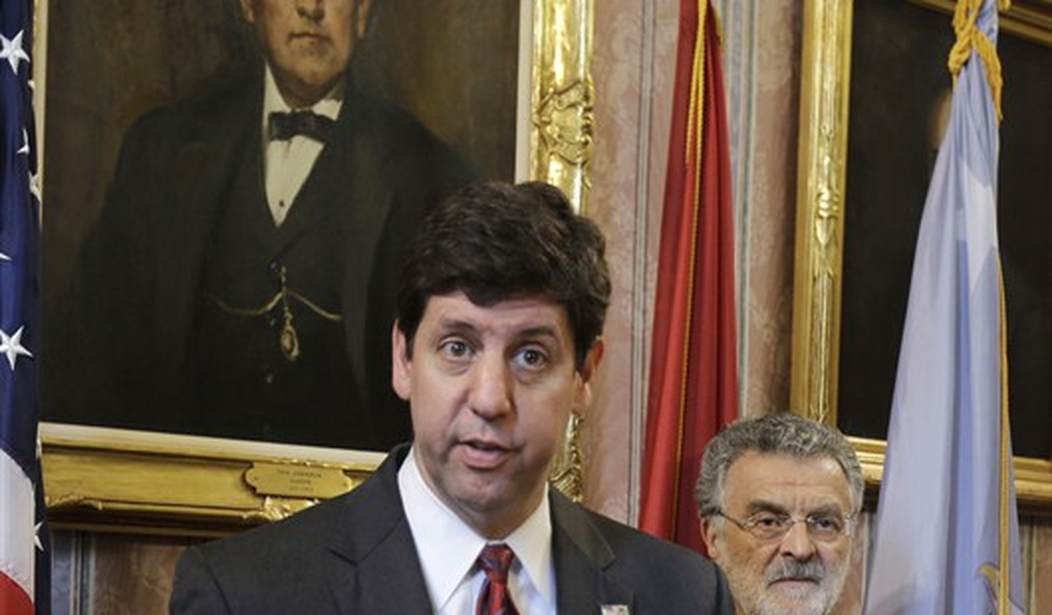Joe Biden’s second choice to be top dog at the Bureau of Alcohol, Tobacco, Firearms, and Explosives is now officially in command of the agency. Steve Dettelbach was sworn in on Tuesday, just in time for news to break about a disturbing visit ATF agents made to the home of a legal gun owner to “check” if he still had several firearms he’d purchased months earlier.
We’ll see if the national media bothers to report on this story (I’m doubtful), and Dettelbach himself can always promise to investigate while pointing out this happened before he was on the job, but I think he’s going to be spending most of his energy in pursuit of the firearms industry than in cleaning up the agency.
The new director is making the media rounds, and told CBS News that despite his past support for things like a ban on so-called assault weapons, he won’t be using his position to lobby for new laws.
“As the ATF director, my focus is and is going to have to be on taking whatever laws Congress provides, what is already there, taking the technology that’s there, taking the resources that are there, and catching the bad guys,” he said. “The ATF director’s job and ATF, our mission is to catch people who have violated the laws we already have.”
But when pressed on what the ATF can do about mass shootings, he did concede part of the focus needs to be on “prevention,” including giving people in the prison system “options other than going back to doing the same thing that got them there.”
Consider me skeptical, especially given the new ATF rules that are set to take effect in August and September regarding unfinished frames and receivers and pistol stabilizing braces. Both of those rules arguably go beyond the authority delegated to the agency by Congress, and with the gun control lobby intent turning the agency into a weaponized part of their movement, I don’t think they’re going to be satisfied unless Dettelbach also shows a willingness to push the envelope of the agency’s authority.
Anti-gun activists are already trying to goad the ATF into “taking action” to address auto sears and Glock switches; simple devices that can be ordered from overseas (most often from China) for $20 or so that can make a semi-automatic firearm function as a fully-automatic weapon. The devices are already illegal under U.S. law, but as the Michael Bloomberg-funded gun control website The Trace opined last month, the ATF could do more than simply enforce the existing statutes. It could target the firearms themselves and the companies producing them.
Another approach would be for the ATF to regulate the other half of a converted machine gun: The gun itself. It’s a path that the agency has taken in the past.
In the late 1970s and early ‘80s, law enforcement agencies started recovering huge numbers of converted RPB Industries SM10 pistols. The popular semiautomatic pistol was a near-perfect replica of the Mac-10 submachine gun, and by shaving down a small internal component with a steel file, it could be modified to fire on fully automatic. At nearly a quarter of the price, it became a hot commodity among drug traffickers.
Law enforcement recovered at least a thousand of the machine guns in crimes across the nation by 1980. That same year, the ATF linked 60 of the guns to drug related murders in Florida alone.
To curb the proliferation of these military-grade weapons, the ATF took an unprecedented step. It reclassified a handful of easily converted semiautomatic pistols and rifles as machine guns. The ruling legally grandfathered the weapons already in circulation, but forced an ultimatum on their makers: Redesign future iterations to be less susceptible to automatic conversion or face selling them under the strict regulations of the National Firearms Act.
Many Democrats say that it’s well within the power of the agency to apply this same strategy to curb the proliferation of modern-day auto sears, like Glock switches, though Luettke and other firearm experts contacted for this story told The Trace that doing so would mean having to regulate dozens of other similarly easy-to-convert handguns.
“A Glock is the most popular handgun in the United States. I think the ATF should explore, as they have in the past, using their regulatory measures to force companies to change their designs or face stricter classifications,” said Representative Eric Swalwell a Democrat from California, who also signed the April letter.
“If they know that their Glocks can be retrofitted with auto sears that easily, and they’re not preventing it with simple design changes, that becomes a product liability,” said Auchincloss.
We’ve already seen gun control groups like Brady argue in lawsuits that AR-15s and other modern sporting rifles can be readily converted to machine guns and should therefore fall under the auspices of the National Firearms Act, so it stands to reason that with an ally now in charge of the agency this will be one of the top priorities for the gun control lobby.
It’s probably a matter of timing more than anything else. Will the Biden administration make a move on semi-automatic firearms before the midterms, or will they hold off until after the election for fear that a high-profile move to administratively impose a gun ban would only add to the expected red wave? Either way I suspect that we’re going to see the ATF embrace the desires of the gun control lobby and anti-gun politicians like Eric Swalwell in the not-too-distant future, and I wouldn’t be surprised if Dettelbach is already strategizing on the specifics of their proposed assault on semi-automatic firearms.









Join the conversation as a VIP Member